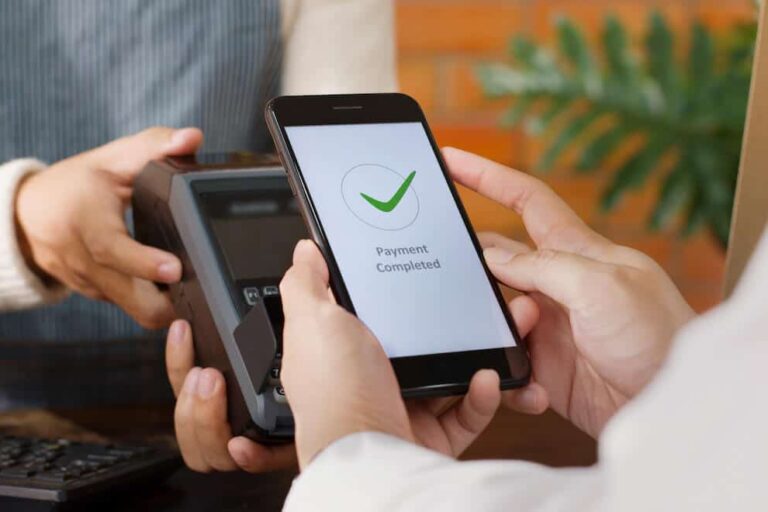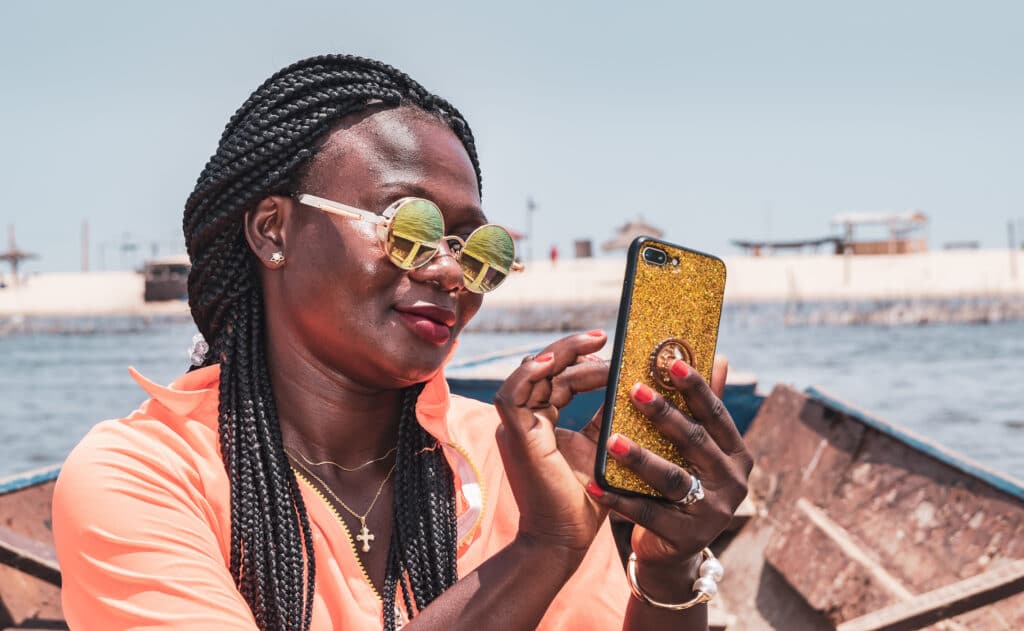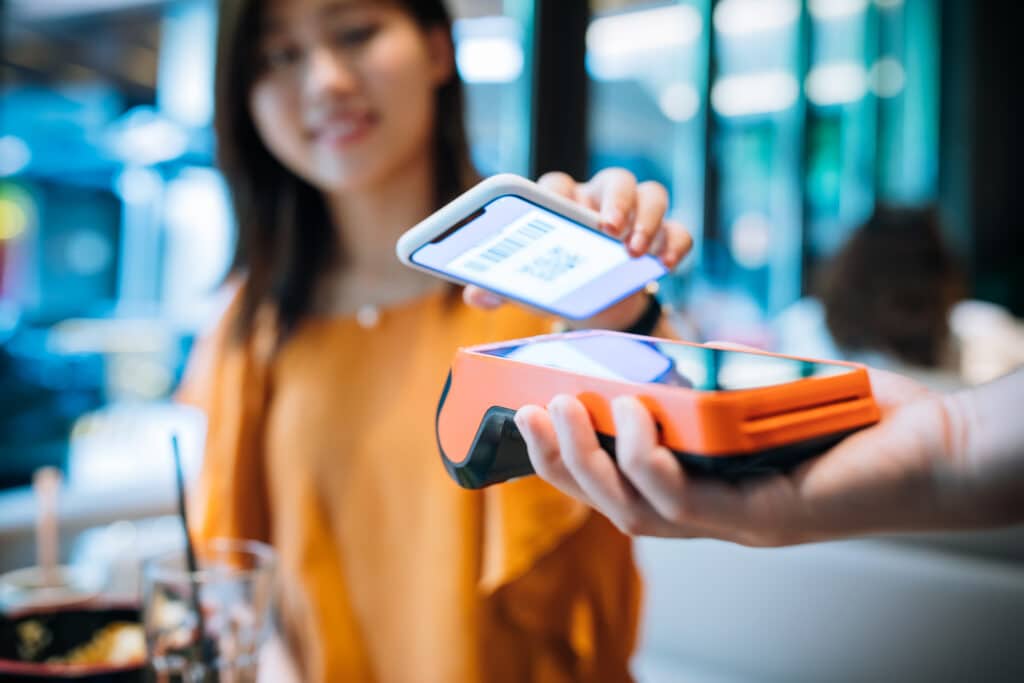What is a digital wallet? It can be a great way to send and receive money without having to carry around a physical card or enter your credit card number online. That said, not all merchants accept mobile or contactless payments, and your favorite digital wallet app may not work outside your country of residence.
Here’s what you need to know about digital wallets and how to use one to make mobile payments or send money internationally. Digital wallets offer a range of functionalities that enhance your payment experience. By utilizing digital wallet features and benefits, users can enjoy secure transactions, quick access to funds, and the convenience of making purchases without the need for physical cash or cards. As mobile payments continue to gain popularity, understanding these tools can help you navigate financial transactions more efficiently.
What is a digital wallet?
A digital wallet is a digital alternative to a physical wallet or purse. It’s usually a mobile app, but you may also be able to view your digital wallet in a web browser and make payments from other types of mobile devices, such as a smartwatch.
Digital wallets that only work on mobile devices are called m-wallets, while those that work on a wider range of devices are called e-wallets, or electronic wallets.
Just as you might carry around multiple payment methods in a physical wallet—such as a credit card, debit card, and cash in your local currency—you can usually store multiple cards in your digital wallet, or e-wallet.
In addition to credit and debit cards, digital wallets may be able to hold:
- Gift cards
- Loyalty cards
- Public transit cards
- Concert tickets
- Boarding passes
- Identification cards
- Bitcoin and cryptocurrency
Digital wallets aren’t bank accounts, but some e-wallets may hold a cash balance that you can top up with a debit card or link directly to your bank account.
How to use a digital wallet
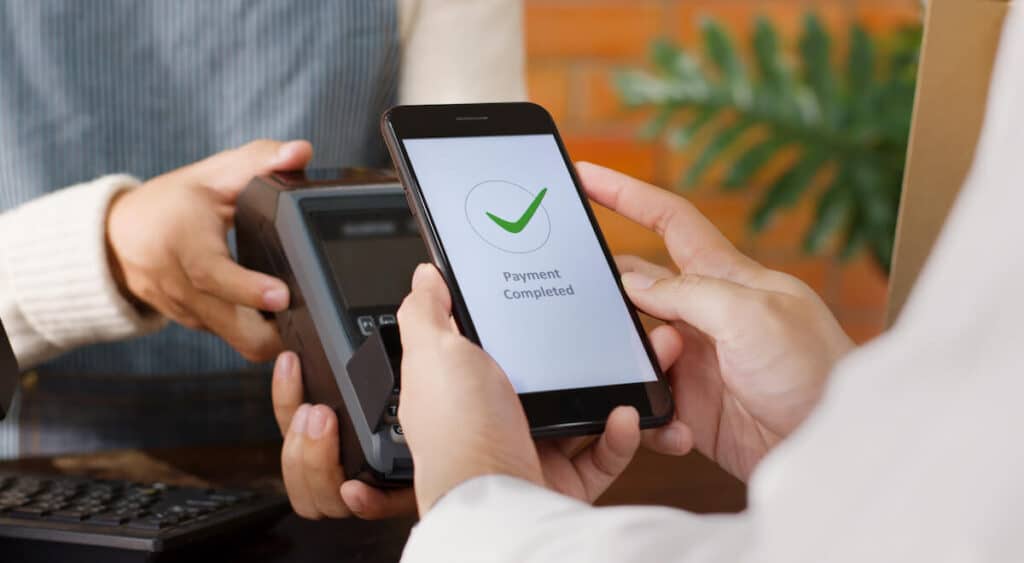
Digital wallets can be used for paying a retailer, sending money to your friends or family members, or even sending money to yourself.
To get started, you can set up your digital wallet by adding your bank account details or credit card information. Modern digital wallets typically use a tool called tokenization, which is meant to keep your card number safe.
Still, it’s a good idea to check your digital wallet provider’s security policies and to lock your digital wallet app behind a passcode or facial recognition tool like Face ID.
Once you’ve added your financial information to your digital wallet, you can use one for online and in-store purchases as long as it’s accepted.
Look for the contactless symbol
Most digital wallets use one of two contactless payment technologies: near-field communication (NFC) or magnetic secure transmission (MST). These technologies send a signal between your mobile device and the merchant’s contactless card reader.
You can choose the “card” you want to pay with in your digital wallet, then hold your device close to the card reader to start the transaction.
You may need to unlock your device with your face or thumbprint if you’ve set up biometric security.
Use a QR code
Some merchants may have a point-of-sale app that uses a QR code instead of an NFC payment terminal.
This is especially common in some parts of Asia, where customers can scan a QR code to view and pay their bill using a digital wallet.
To use this option, look for PayPal or other QR codes at the checkout counter.
Send money to friends and family
If your recipient uses the same digital wallet or a mobile banking app that’s compatible with your own, you may be able to send them a payment by looking up their username, phone number, or other account information details.
In the U.S., it’s common for friends to “Venmo” each other their share of an expense, while Brazilians commonly use the Pix payment system for similar day-to-day transactions.
However, digital payments typically only work within a country’s banking system, so you may need to use an app like Remitly for international money transfers.
Advantages of digital wallets
Knowing how to use a digital wallet is important if you live in or are traveling to a country that relies heavily on mobile payments. But that’s not the only good reason to learn how to use a digital wallet. Here are three other advantages to consider.
Security
Carrying around credit or debit cards in a physical wallet can be risky. Even if you never lose or misplace your wallet, thieves may skim your card information when you use an ATM.
Digital wallets reduce the risk of unauthorized card transactions. They store your payment information securely, and you can protect your card details from hackers by using multiple forms of authentication.
If someone steals your phone, you can disable your wallet remotely, saving you from having to cancel your card and wait for the issuer to send you a new one.
Convenience
Paying with a digital wallet may also be more convenient than other payment methods. Depending on which type of e-wallet you use, you may be able to view your balance directly in the app and set up alerts and notifications.
It can save you from having to carry around cash and even from exchanging currency, if you choose a digital wallet that supports international transactions.
Plus, you can use it to store things like airline boarding passes and concert tickets, so you don’t have to worry about forgetting important documents at home.
Speed
Digital wallets can often process transactions much more quickly than other payment methods. It can take several business days for a check to clear and even credit card payments may not show up on your account balance immediately.
You can access your digital wallet 24/7, so you don’t have to wait for your bank to be open to initiate a payment. Many person-to-person transactions take place very quickly, especially if your recipient uses the same mobile banking service.
Examples of digital wallets
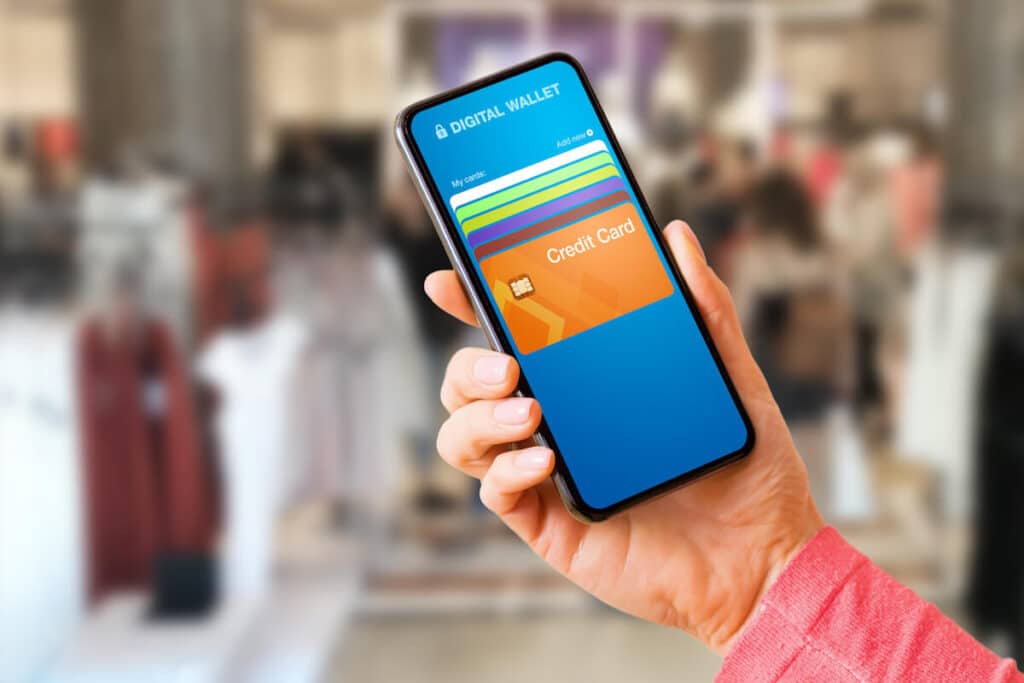
Chances are you’ve heard of some of the most popular mobile wallets around the world, from AliPay to Venmo. Here are three of the most widely used digital payment apps and the devices that support them.
Apple Wallet
Apple Wallet is available on a wide range of Apple devices, including the iPhone 6 and up, as well as some iPads and wearable devices like the Apple Watch.
It supports contactless NFC payments using Apple Pay, which you can use for in-app payments and online purchases.
Apple Pay works in dozens of countries around the world, but keep in mind that your credit or debit card issuer may charge international transaction fees.
Google Wallet
If you don’t have an Apple device, then you won’t be able to use Apple Pay—but there’s a similar digital wallet for Android devices. Google Wallet (formerly called Google Pay) also uses NFC and supports contactless payments in dozens of countries.
Google Wallet lets you store everything from digital car keys (specific models only) to your driver’s license in some U.S. states.
Samsung Wallet
Samsung has its own digital wallet for Samsung devices, including smartwatches and phones. Unlike Apple and Google Wallet, it supports NFC and MST transactions.
Samsung Pay is now part of the Samsung Wallet app, which allows you to store debit and credit cards from over 1,000 financial institutions. You can also store your vaccine record and use it to ride New York City’s public transit system.
Use a digital wallet for international money transfers

Digital wallets are a great way to pay for goods and services from a mobile app or send money to loved ones. But not all types of digital wallets support international payments, and if they do, you may have to pay international transaction fees.
If you need to send money to your friends or family members overseas, then you may be better off using an international money transfer app like Remitly. Remitly offers fast and affordable international money transfers.
Popular Digital Wallets from Around the World
Have a look at this list of some top mobile wallets in different regions. Have you heard of all of them?
Mobile Money in Africa
Africa has the world’s largest mobile money market, and the COVID-19 pandemic only accelerated its growth. To stimulate the economy, many African governments have reduced barriers to encourage more people to sign up for mobile wallets.
Many people living in Africa don’t have access to traditional banking services. Mobile money technology has enabled the unbanked to access financial services more readily. To have a mobile money account, all one needs is a mobile phone—no bank account required.
While the popularity of the following companies varies by country, each of them helps to provide financial services that many citizens would not otherwise have.
1. MTN Mobile Money
With nearly fifty million users throughout the world, MTN stands out among other mobile wallets in Africa for name recognition and adoption. It offers services in Rwanda, South Africa, the Republic of Congo and at least 22 other countries in Africa and the Middle East.
2. Orange Money
After its initial rollout in 2008, Orange Money from Orange Group quickly became one of the most popular mobile wallets in Africa. It’s only slightly less widely used than MTN. It’s also available in 18 countries on the continent, so it’s one of MTN’s biggest competitors in many places.
3. M-Pesa
Launched in 2007 by Vodafone Group and Safaricom, M-Pesa has active agent operations across the Democratic Republic of Congo (DRC), Egypt, Ghana, Kenya, Lesotho, Mozambique, and Tanzania.
While it’s only available in seven countries in Africa, M-Pesa still reaches a massive amount of the continent’s citizens. Most of its customers are concentrated in Kenya. A major driver of their popularity is their customer service. As their user base increased, they grew their agent network at the same pace.
Mobile Wallets in Asia
Asia is the epicenter for this technology’s adoption. For instance, digital wallets account for 48 percent of payment volume and over 70% of e-commerce spending in China.
Nearly one-third of e-commerce spending in Asia also comes directly from these mobile wallets. While some popular options in the world are available throughout the region, the following offerings remain the most widely used.
4. Alipay
While there are many mobile wallet options in China, Alipay is the undisputed king. In 2020, it made up 55 percent of the Chinese mobile payments market, and it keeps growing. Users love this offering because it also provides services in the areas of wealth management, investing, and micro-loans.
5. WeChat
While Alipay may be the most popular option in China, WeChat is not far behind. Research from the second half of 2019 showed that it made up 39 percent of the mobile wallet market in the country and boasts over a billion users.
As one of the most popular communication methods in the country, its virtual payment offering immediately had a massive user base.
6. GCash
While China may have many well-known virtual wallet brands, other Asian nations have their own mobile money providers. In the Philippines, for instance, GCash has millions of users and is so far the most popular mobile wallet in the island nation in terms of total users.
Mobile Money in Latin America
Just as in Africa, many people in Latin America don’t use traditional banking services, though this varies by country. Regardless, as in other developing nations, mobile money and mobile banking options are gaining traction in the region.
One reason? Mobile internet access has increased in Latin America. In fact, a recent report by the Global System for Mobile Communication reveals that 4G coverage in Latin America went up to 85% in 2019, while Mexico alone has experienced a nearly 20% increase in mobile internet penetration in the past five years.
Digital and cloud payments are also expected to drive investment from fintech and banks in Latin America in the coming years. The following mobile wallets have already established themselves to take advantage of this revolution.
7. DaviPlata
DaviPlata is a mobile wallet offered by one of the biggest banks in Colombia, Banco Davivienda. With DaviPlata, Colombians can pay for many goods and services they’d otherwise use cash for. They can also withdraw cash from their DaviPlata wallet at Banco Davivienda ATM machines.
With DaviPlata, Banco Davivienda is working to give Colombians access to financial services without needing to have a bank account. Users can transfer money across wallets, get their balance on their phone, and make payments digitally.
DaviPlata is becoming well-known thanks to its contract with the Colombian government to distribute payments to Familias en Accion recipients. This social safety net program reaches over 900,000 Colombians.
8. Tigo Money
Many citizens of Paraguay, Bolivia, Guatemala, Honduras, and El Salvador depend on Tigo Money for many of their financial needs. The mobile wallet boasts millions of users in these countries.
Tigo Money is just one version of the Tigo product, which is known as Tigo Pesa in Tanzania and Tigo Cash in other parts of Africa.
Mobile Wallets in North America
The virtual payment options in North America are among the most widely available in the world. You can also use these digital tools in countries around the globe, but typically, you cannot use them to send money from one country to another.
Even though the adoption of these services in the United States is not as widespread as their availability, they’re becoming more common, especially in retail settings.
9. Google Pay
Android users have a built-in virtual payment system with Google Pay. Users can make contactless payments in dozens of countries, from Austria to Singapore to the United States; you can see the full list here. However, sending money to friends and family with Google Pay is limited to the U.S. and India at the time of this writing.
10. Apple Pay
Users of iOS devices—including the Apple Watch and iPad—can pay with their phones in over 60 countries.
11. Samsung Pay
Owners of Samsung devices can also use the phone’s mobile wallet app to make payments. It’s accepted in at least 24 countries.
What Is Mobile Money, Anyway?
We use many terms regarding mobile money technology: virtual wallet, digital wallet, mobile wallet, mobile banking, mobile payments—and the list goes on.
Let’s take a look at two of these common terms. Mobile wallets enable you to pay with your credit or debit card without having to actually carry the cards around. Instead, you pay from an app on your phone. For example, when you use a mobile wallet to pay at a store, you might tap your phone over a reader at the checkout station. The merchant charges you directly from the card you provide in the mobile wallet.
The more general term mobile money refers to the ability to make payments, transfer money between accounts, deposit money, or withdraw funds by using a mobile device.
Not all mobile money accounts require a traditional bank account, which makes them popular in developing countries, where more people are likely to be “unbanked.” Armed with only a phone, mobile money users can store funds in a secure account connected to their mobile phone number. They can take cash to a mobile money agent to have it added to their phone’s account.
Meanwhile, others can transfer money to mobile money accounts via their bank, a credit or debit card, a remittance provider, or their own mobile money account.
International Money Transfers to Mobile Wallets
Thinking of sending money abroad to a mobile money account? Try Remitly.
